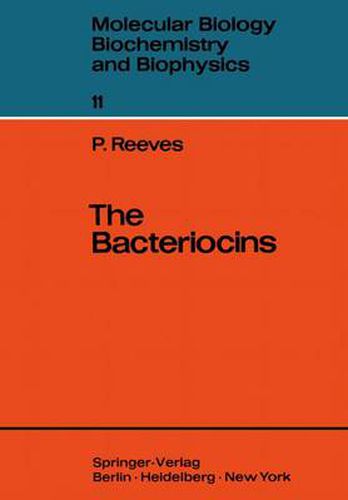Readings Newsletter
Become a Readings Member to make your shopping experience even easier.
Sign in or sign up for free!
You’re not far away from qualifying for FREE standard shipping within Australia
You’ve qualified for FREE standard shipping within Australia
The cart is loading…






This title is printed to order. This book may have been self-published. If so, we cannot guarantee the quality of the content. In the main most books will have gone through the editing process however some may not. We therefore suggest that you be aware of this before ordering this book. If in doubt check either the author or publisher’s details as we are unable to accept any returns unless they are faulty. Please contact us if you have any questions.
In recent years bacteriocins, especially colicins, have become widely known to molecular biologists as proteins with peculiar ways of killing bacteria. These same bacteriocins have been known for a long time to bacteriology for their unusual activity spectra and enormous variety. In this monograph I have attempted to bring together our detailed knowledge of those few bacteriocins which have already re ceived attention from molecular biologists, and our less detailed hut extensive knowledge of the variety of bacteriocins which exist. The field has been reviewed in whole or in part, by several authors [FREDERICQ, 1957, 1964, 1965 (2); IVANOVICS, 1962; HAMON, 1965; REEVES, 1965 (2)]. These reviews have been very useful to the author, and readers will find further references in them, and sometimes alternative viewpoints. We have already referred to bacteriocins as proteins, and in doing so have ex cluded many more complex antibacterial agents which resemble bacteriophages or their tails. In the author’s view, these phage-like particles are probably not bacterio cins, but many authors include them within the definition; the more restrictive de finition used here has meant omitting discussion of some excellent studies on what the present author would term defective bacteriophages. In the first chapter we look at the discovery of bacteriocins and an outline of their classification. With this background we can discuss in Chapters 2 to 6 the chemistry, genetics and mode of action of the more intensively studied bacteriocins.
$9.00 standard shipping within Australia
FREE standard shipping within Australia for orders over $100.00
Express & International shipping calculated at checkout
This title is printed to order. This book may have been self-published. If so, we cannot guarantee the quality of the content. In the main most books will have gone through the editing process however some may not. We therefore suggest that you be aware of this before ordering this book. If in doubt check either the author or publisher’s details as we are unable to accept any returns unless they are faulty. Please contact us if you have any questions.
In recent years bacteriocins, especially colicins, have become widely known to molecular biologists as proteins with peculiar ways of killing bacteria. These same bacteriocins have been known for a long time to bacteriology for their unusual activity spectra and enormous variety. In this monograph I have attempted to bring together our detailed knowledge of those few bacteriocins which have already re ceived attention from molecular biologists, and our less detailed hut extensive knowledge of the variety of bacteriocins which exist. The field has been reviewed in whole or in part, by several authors [FREDERICQ, 1957, 1964, 1965 (2); IVANOVICS, 1962; HAMON, 1965; REEVES, 1965 (2)]. These reviews have been very useful to the author, and readers will find further references in them, and sometimes alternative viewpoints. We have already referred to bacteriocins as proteins, and in doing so have ex cluded many more complex antibacterial agents which resemble bacteriophages or their tails. In the author’s view, these phage-like particles are probably not bacterio cins, but many authors include them within the definition; the more restrictive de finition used here has meant omitting discussion of some excellent studies on what the present author would term defective bacteriophages. In the first chapter we look at the discovery of bacteriocins and an outline of their classification. With this background we can discuss in Chapters 2 to 6 the chemistry, genetics and mode of action of the more intensively studied bacteriocins.